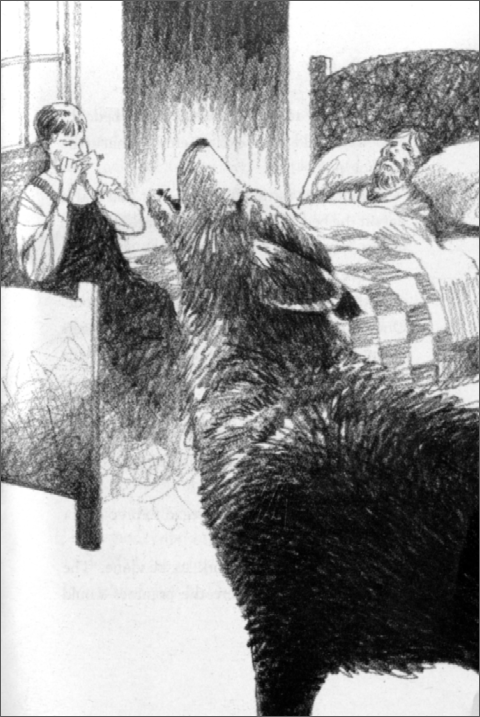
A FEW OTHER EVENTS FOR
MARCH 5:
- Happy birthday Mem Fox (Time for Bed) and Gary Hogg (Scrambled Eggs and Spider Legs).
- It’s the birth date of Howard Pyle (1853–1911), Otto of the Silver Hand, Errol Le Cain (1941–1989), The Twelve Dancing Princesses.
- In 1770, a riot known as the Boston Massacre, one of the key events that turned British colonists against King George III, took place in what would become the capital of Massachusetts. Read For Liberty: The Story of the Boston Massacre by Timothy Decker.
- Winston Churchill uses the phrase “Iron Curtain” in a speech on this day in 1946. Read The Wall: Growing Up Behind the Iron Curtain by Peter SĂs.
Today the Iditarod, “the last great race on earth,” begins in Anchorage, Alaska. Dog teams and humans will travel 1,150 miles through Alaskan wilderness to Nome. Some families and classes like to encourage children to pick a team and follow it throughout the month, writing about its journey. And for a story to introduce dog racing, no better book exists than John Reynolds Gardiner’s Stone Fox.
An engaging young boy, Willy, lives with his grandfather on a farm in Alaska. The old man has been declining in health, refusing to leave his bed. He owes $500 in back taxes and soon will lose his home. Willy wants to save both his grandfather and the farm, so he enters his dog Searchlight in the National Dogsled Race, which offers $500 in prize money. Because the trail goes past his house, he and Searchlight have the advantage of running on home territory, but they will be pitted against the legendary Native American racer Stone Fox. The details of the tense race keep readers enthralled, all the way to its surprising end.
Of all the writers I have researched over the years, John Reynolds Gardiner seems the least likely to have produced such a powerful and memorable book. As a boy he was very rebellious. Since his parents thought he should learn to read, he refused. He didn’t read his first novel until he turned nineteen and struggled with grammar and spelling throughout his life. In college he found that English as a Second Language (ESL) students could write better than he could. After taking up engineering as a career, Gardiner worked for McDonnell Douglas and even holds a patent for a plastic necktie filled with water and guppies.
Still, it is a long way from clever toys to classic literature. Encouraged by his brother, Gardiner took a television writing class from Martin Tahse, a creator of After School Specials. When Harper & Row editor Barbara Fenton wrote to Tahse, asking him if he had a book he might want to write, he sent her instead to Gardiner, who was working on a story based on a Rocky Mountain legend. Fenton took a chance on this unknown writer, teaching him the craft of writing along the way. The book took several years to develop but always seemed to her worth the time. In the end she read a manuscript that combined elements of adventure, sports, Westerns, and dog stories.
If you know any second through fourth grade reading rebels, Stone Fox read either aloud or silently just might convince them that a great story can be found in the pages of a book. It was created by someone like them—another reading rebel.
Here’s a section from Stone Fox:
Â
That evening little Willy made a discovery.Â
He was sitting at the foot of Grandfather’s bed playing the harmonica. He wasn’t as good as Grandfather by a long shot, and whenever he missed a note Searchlight would put her head back and howl.
Once, when little Willy was way off key, Searchlight actually grabbed the harmonica in her mouth and ran out of the room with it.
“Do you want me to play some more?” little Willy asked Grandfather, knowing very well that Grandfather would not answer. Grandfather had not talked–not one word–for over three weeks.
But something happened that was almost like talking.
Grandfather put his hand down on the bed with his palm facing upward. Little Willy looked at the hand for a long time and then asked, in a whisper, “Does that mean ‘yes’?”
Grandfather closed his hand slowly, and then opened it again.
Originally posted March 5, 2011. Updated for .














This one has such a special spot in my heart! Each of my three children found this one on their own and loved it their own way.
Best of all, I’ll never forget my daughter waiting for her little brother to finish it – because three years later after reading it herself, she knew he’d be heartbroken in the end – and knew he’d need someone who understood just how sad he felt.
Whenever I read aloud books with tough endings, I have to read the ending out loud several times when I am alone so that I do not come totally undone while reading to students. Stone Fox is one of those books. (I’m not opposed to them seeing my emotions; they know I am not stoic. I just know that I would be overcome and not be able to get through the reading.)
In 1992 I read this book to a class of 5th and 6th graders. That particular year, the parent of one of the male students called me. She asked what time of the day I did read aloud, and I told her it was right after lunch. She then shared that her son held in his emotions all afternoon, and when she picked him up from school, as soon as the car door was shut, he started bawling.
I love books like this that students will never forget. My five children have all read it, and when I happen to mention the title to students who haven’t read it, I get the book in their hands.
Read this very short, wonderful book if you’ve missed it!
Thanks for your reviews, Anita! I look forward to them every day.
Yes this little book has made it all the way to Australia and I am so glad it did. What I especially like about Stone Fox is that such a powerful story can be told in such a slim volume. It is a good one to try with reluctant readers. I have not had the courage to read it aloud but I have recommended this book for years. Thanks for reminding me about it andfor your insights into the author. Our copy has such a different cover it might be time to purchase a new copy for my school.